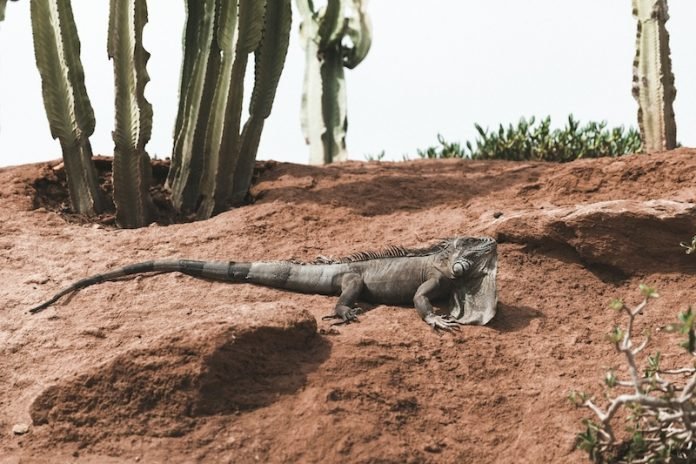
Once upon a time, about 200 million years ago, the Mendip Hills in Somerset, England, were home to some remarkable creatures.
Researchers from the University of Bristol have recently uncovered the fascinating life that thrived in this region during the Late Triassic period.
Among these ancient residents were unique winged reptiles known as Kuehneosaurs. These creatures resembled lizards but were more closely related to the ancestors of crocodiles and dinosaurs.
They were small, able to fit comfortably in your hand, and came in two types: one with long, expansive wings and the other with shorter wings. Their wings were made of skin stretched over their elongated ribs, allowing them to glide gracefully from tree to tree.
These little sky gliders were a lot like the modern flying lizard Draco found in Southeast Asia. They probably spent their time on the ground or climbing trees, hunting for insects.
If they were scared or saw an insect flying by, they could launch themselves into the air and glide to a safe spot about 10 meters away.
This discovery was made by Mike Cawthorne, a Masters student at the University of Bristol. He was studying a collection of reptile fossils from limestone quarries in the area. These quarries were part of a big sub-tropical island back then, called the Mendip Palaeo-island.
The research, published in the Proceedings of the Geologists’ Association, also talks about other fascinating reptiles from the same period.
There were reptiles with complex teeth, like the trilophosaur Variodens, and an aquatic reptile called Pachystropheus that probably lived a bit like a modern-day otter, munching on shrimps and small fish.
Many of these ancient animals either fell into or were washed into caves and cracks in the limestone, which is how their bones were preserved for us to find today.
“All these creatures were small,” said Mike Cawthorne. He studied collections made in the 1940s and 1950s when the quarries were still working, and paleontologists could talk to the quarry workers and see fresh rock faces.
Professor Mike Benton from Bristol’s School of Earth Sciences explained how much effort went into identifying these fossil bones, which were often found separately and not in complete skeletons.
By comparing these isolated bones with more complete specimens from around Bristol, Cawthorne showed that the Mendip Palaeo-island, stretching nearly 30 km, was bustling with diverse small reptiles.
Interestingly, while no dinosaur bones were found on this particular island, Professor Benton believes they were likely there because dinosaur bones have been found in other locations of the same age around Bristol.
The region around Bristol back then was an archipelago of small islands in a warm sub-tropical sea. These findings bring to life a world of small, agile reptiles, gliding through the air and paddling in the rivers, in a landscape that’s hard to imagine today.
The bones were collected by remarkable fossil finders like Tom Fry, an amateur collector who worked for Bristol University. He often cycled to the quarries and came back with bags full of rocks.
Other notable collectors were Walter Kühne, a German prisoner of war in Britain during World War II, and Pamela L. Robinson from University College London.
Their discoveries, now kept in the Natural History Museum in London and the Geological collections of the University of Bristol, have given us a glimpse into a long-gone world of ancient Somerset.
The research findings can be found in the Proceedings of the Geologists’ Association.
Copyright © 2024 Knowridge Science Report. All rights reserved.



